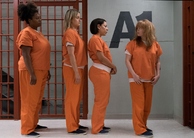From Interstate - Journal of International Affairs VOL. 2015/2016 NO. 1How Important are Masculinity and Femininity in the Culture of Militaries?
IN THIS ARTICLE
KEYWORDS
In 1999, The New York Times Magazine ran a cover story which asked: Does “being a good soldier [depend] on being an aggressive male?” “Is there something uniquely male about the warrior? Can the warrior survive the feminisation of the military, or are we sacrificing military effectiveness on the altar of political correctness?”1 These questions epitomise the modern debate on the effects of increased gender diversity in the military (most notably the US military) and specifically, the effects of increasing numbers of women amongst the ranks of militaries. This debate raises a further question: just how important a role does sexuality and gender play within modern military culture? In this essay, the roles of masculinity and femininity, particularly in the context of the modern US military culture, shall be examined through a series of issues in military culture related to gender. An issue that will see particular scrutiny is the role and impact of gender roles and gendered behaviour within militaries. The role of debates on biology and sexual orientation, as well as scrutiny from civilian society of military culture will also be used to explore masculinity and femininity within military cultures. The following text will begin by exploring questions of biology, masculinity and the issue of homosexual inclusion within the military. The text will continue by exploring the role of gender in appearance, training, peacekeeping, perception of war and military suicides. The text will then continue further by analyzing military culture and feminism, followed by gender and military culture outside the USA before reaching a conclusion.U.S. Army 1st Lt. Audrey Griffith, points out an area of interest during a force protection drill to Spc. Heidi Gerke along the perimeter of Forward Operating Base Hadrian in Deh Rawud, Afghanistan, March 18, 2013. Both women are members of the 92nd Engineer Battalion from Fort Stewart, Ga. (Photo by Australian Army WO2 Andrew Hetherington/Combined Team Uruzgan Public Affairs) Biology, Masculinity and the Issue of Homosexual InclusionTo begin, with regards to masculinity in military culture, one can argue from an essentialist point of view that masculine culture in the military stems from biological causes. Manhood and masculinity is closely associated with aggression, violence, war and intense competition for dominance, with these behaviours arguably rooted in biology. If one subscribes to this association with male biology, soldiering becomes a natural activity for males which will draw them in instinctively. Furthermore, encouraged into it by older men and women in society, as a way to channel their natural proclivity for violent and disruptive behaviour in the defence of their community and state.2 Such an argument suggests a strong connection between military service and masculinity. If one is to look at recent gender politics in the US military, it becomes quite clear that masculinity and particularly the public image of masculinity, is deeply ingrained in its military culture. Lesbians and gays had long been banned from the US military, and 1993 debates on homosexual inclusion revealed many gender related concerns over their addition. The military feared that allowing people who were openly homosexual to serve would dishonour the US military's image in the eyes of socially conservative Americans and allies. In particular, it was feared that allowing homosexuals to serve would impact negatively on overall recruitment figures. The presence of openly gay men would discourage potential recruits who currently believed the military to be a place which would recognise and reward 'real men'.3 Until recently, openly homosexual service people were banned from the US military under the Don't Ask, Don't Tell policy. It demanded that, in return for the privilege of being allowed to enlist in the military, LGB individuals had to remain ‘in the closet’ while serving within the military. This law, whilst more progressive than the previous complete ban on LGB individuals enlisting, still served to demean LGB individuals' identities and sense of value; implicating that non-heterosexual orientation was wrong and that LGB individuals are inferior to their heterosexual counterparts.4 This kind of sexual prejudice is grounded in the enforcement of traditional gender norms. Most prominently, sexual violence is utilised (often by more high- ranking service people) against servicemen who are perceived as feminine, and servicewomen who are viewed as masculine, in order to ‘emasculate’ gay servicemen and ‘feminise’ lesbian servicewomen.5 The Gendered Issues of Appearance and Military TrainingThe increasing prevalence of women in the US military has provoked a number of debates within the US military culture regarding new female personnel. The conundrum over finding a middle ground between the masculinity that military culture demands, the femininity that women bring with them and which conservative society wishes to see maintained defined the outcome of the debate. A significant longstanding issue had prevailed; the appearance of female personnel. Uniformity is highly valued in military culture, but women's bodies and the deviant sexuality associated with them has historically presented problems regarding military apparel. In the 1940s, uniforms given to women were modified in order to remove the breast pockets. This was done to prevent unwanted emphasis of the female personnel's breasts. In the 1970s and 80s, women's work uniforms were phased out in favour of uniformity. This provoked a debate as to whether female personnel should copy men by tucking their shirts into their pants, or wear their shirt outside to mirror their old uniform which covered their waists, hips and buttocks.6 Hairstyles also became a point of issue; US military regulations outlaw long 'feminine' hairstyles, but also outlaw women having very short 'masculine' hairstyles. This creates many difficulties in practise due to the subjectivity of these regulations. Officers may differ on what hair lengths constitute excessive masculinity or femininity for women.7 These debates over how a female soldier should look is indicative of a longstanding conflict within US military culture as to how femininity should treated. The contradiction between women filling occupational roles whose defining characteristics are inexorably linked with masculinity, while also maintaining a degree of femininity that is demanded of them by wider society. 8 One area in military culture where masculine practises seemingly stand out, is in the process of military training and indoctrination. If one were to define femininity as 'nurturing' and 'caring', the training of a modern soldier can be anything but feminine. The brutal training process that turns an ordinary man or woman into a dehumanised killing machine generally involves verbal, physical and mental abuse from superiors and fellow trainees, to break down new recruits. This aggressive, masculine process plays a crucial role in ensuring that soldiers taken away from civilian life are fully integrated into military culture and practises.9 However, if one looks at later stages of training, a feminine aspect begins to emerge. Gradually, the insults and complaints from superiors are replaced with occasional praise and encouragement. The instructors, previously figures feared and resented transform into a nurturing parent that the trainee wishes to please. Masculine competition and hostility towards each other also gives way to intense bonding between soldiers; seeing each other as a family.10 If the process of military training and indoctrination is examined through the medium of gender, it becomes clear that a combination of masculine and feminine behaviour is key to the process. However, it would be untrue to characterise the nurturing relationship between recruits and their trainers as being the only feminine aspect of life in a modern military. Alongside the great demands the military makes of its members, there is a commitment from the military to support and care for its members and their families. This is both material in the form of medical, housing and educational services and emotional support.11 Gender in PeacekeepingMost prominently, the effects of masculine attitudes and practises in modern militaries is exemplified in the conduct of Canadian UN peacekeeping troops in the 1990s. The ratio of violent crime amongst Canadian Airborne troops was disproportionately higher than general Canadian society. This is believed to be a result of masculine competition between airborne soldiers and the local male populace over local women. An unusual dichotomy is also present amongst the Canadian Airborne in the 1990s with regards to other attitudes and behaviour relating to women. Canadian Airborne troops in Somalia self-identified as 'warrior princes', however they were required as UN peacekeepers to protect the women and children of Somalia. Once in Somalia, perceptions of Somali men as lazy chauvinists who had their women and children do everything for them, bred hostility. This hostility would be exacerbated by racist tendencies amongst the Airborne, and the perception of Somali men being homosexual due to their 'feminine' social practises, provoking outrage from masculine homophobes. The dichotomy emerges when figures show that rates of sexual violence (over 50% of which being against women) amongst the airborne is disproportionally higher than in wider society, moreover the report revealing this disturbing evidence was not pursued.12 This case study shows how masculine attitudes can create a culture wherein beliefs on the importance of helping and protecting women can coexist with inclinations and apathy toward sexual violence against women by soldiers. Gender and Perception of WarIt has been observed that feminine women in the military may, on average, perceive certain wartime events and activities differently to their masculine male counterparts. A 2009 study of mixed male and female American students were presented with a vignette where an American soldier (whose gender was varied between participants) tortures and ultimately kills a prisoner (whose gender was also varied). The participants were then asked questions about their opinions towards the case. The study found that female participants were on average, more shocked by the guard's actions, and held both the main guard and the ancillary guards more responsible for the incident than the male participants.13 This study suggests that women in the military on average are less likely to carry out or condone such unethical behaviour in war. It could be argued that greater inclusion of women into the military could reduce the number of such incidents. The inspiration for the study was images of US servicewomen at Abu Ghraib prison in Iraq abusing prisoners, creating a debate of how women were capable of such actions.14 While the study shows that such behaviour is perceived as less acceptable by women, at least some women in the military, possibly due to their immersion in gendered military culture, are accepting of such behaviour. One final finding of the study should also be mentioned with relevance to the role of gender in the US military. The study found no distinction between participant's opinions whether the abusive guard was male or female.15 This could suggest at least in US public opinion, the US military is becoming less gender-specific in nature.Continued on Next Page » Suggested Reading from Inquiries Journal
Inquiries Journal provides undergraduate and graduate students around the world a platform for the wide dissemination of academic work over a range of core disciplines. Representing the work of students from hundreds of institutions around the globe, Inquiries Journal's large database of academic articles is completely free. Learn more | Blog | Submit Latest in Women's & Gender Studies |




















